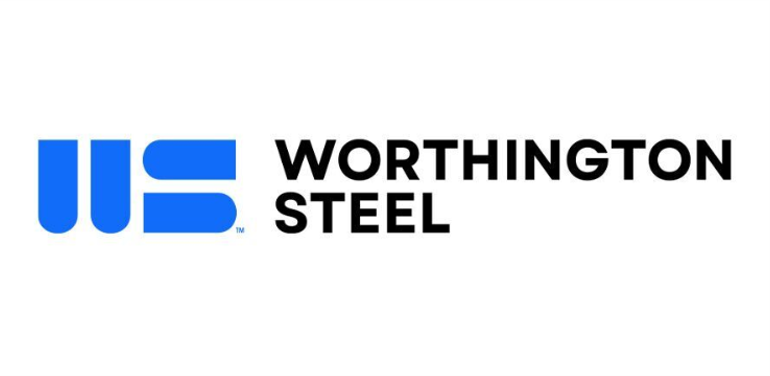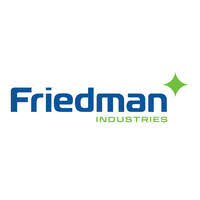Service Centers

Aging Owners, Rising Taxes and Roaring '20s Drive M&A Rebound
Written by Michael Cowden
April 17, 2021
Downstream metals M&A is back, and it could be bigger than ever – or at least as big as it’s been since the last metals super cycle in 2006-08, according to one investment banker.
Deal volume in the metals service center and processing sectors was good in early 2020 and “cratered” following the COVID-19 outbreak. But it has rebounded in recent months as vaccinations have rolled out and as the economic outlook has improved, Dan Sullivan, founder and managing director of Chicago-based Montrose Advisors LLC, told Steel Market Update.
![]() “There is pent-up demand to get businesses sold, and I think that will really start happening later this year,” Sullivan said.
“There is pent-up demand to get businesses sold, and I think that will really start happening later this year,” Sullivan said.
That swift turnabout is change from the early 2000s, which saw “crazy deal volumes” before the 2008-09 financial crisis – and then little in the way of M&A until 2011.
Death (or Retirement) and Taxes
Some drivers of deal activity – namely, an older generation looking to cash out and retire – have not changed in the last 15 years. If anything, they’ve taken on increased urgency.
“In a lot of family businesses, a lot of owners are nearing retirement age,” Sullivan said. “People did not stop getting older just because the pandemic hit.”
Approximately 75% of owners of family-owned manufacturing companies in the Chicago area are over 55, and half of them have no succession plan, according to a 2019 report from the University of Illinois at Chicago’s Great Cities Institute. An even greater number, 62%, had no designated successor, up from 38% when similar research was conducted in 1989.
And that trend is not specific to Illinois. “There are baby boomers whose kids don’t want to go into the business all over the country,” Sullivan said.
Another motivating factor is that higher state and federal taxes are expected in the years ahead – which could meaningfully impact the gains from selling a business. Indeed, the prospect of higher taxes was already a motivating factor in some deals that closed late in 2020, he said.
“The parties were familiar with each other and could stop (because of the pandemic) and then pick back up,” Sullivan said.
The Roaring ’20s
It’s not just the second half of 2021 that’s looking good when it comes to downstream metals M&A, so too are ’22 and ’23. And it’s not just demographics and taxes that are driving deals, so too is fatigue on the heels of a steep downturn last spring and summer followed by a V-shaped recovery in the fall and into 2021. “The last year has been unbelievably hard. And it has not gotten any easier to operate businesses,” Sullivan said.
Costs for just about everything, not just for steel and metal but also for equipment and labor, have gone up. And both material and workers are in short supply. If that weren’t enough, businesses that want to remain relevant have to be willing to spend to scale up, to automate and to invest in sophisticated manufacturing capabilities. “You don’t really see the service center down the street, the three-laser shop, getting 10 people interested in buying them,” he said. “You need a factory full of lasers.”
In fact, service centers in recent years generally have been bought by competing service centers. What’s most attractive to other potential buyers are companies that have a unique product niche, operational capability or geographic stronghold. ““Can a service center survive on just a couple of slitters? No,” Sullivan said. “The low-margin business isn’t attractive.”
In other words, further downstream — think companies tilted more toward fabrication and manufacturing — is where the universe of potential buyers is broader. It includes not just competing service centers but also manufacturers and financial interests such as private equity. Part of the attractiveness of downstream businesses is that commodity prices represent far less of their overall cost structure compared to a service center, he said.
But current prices aren’t a deal breaker. “Can flat rolled stay at $1,400 (per ton)? Nobody really thinks that.” And, yes, 2008-09 (financial crisis), 2014-15 (oil price crash) and 2019 (easing of Section 232) are potentially cautionary tales – periods that saw prices “crash hard.” But inventories were high then “and so the losses you could incur were staggering.” This time, inventories are historically low despite high prices, Sullivan said.
Service centers held only 1.8 months’ of supply of flat-rolled inventories at the end of March, down from 2.14 months’ supply in February, according to SMU data. “And it’s all spoken for, it’s all sold – so the risk is lower for a price drop to really hurt people than it was in the past,” Sullivan said.
And 2008-09, broadly speaking, is a poor template for understanding 2020-21. In 2008-09, prices and demand dropped more in tandem. In 2020, demand was forced to the side lines in response to government efforts to contain the pandemic – but it never left the field. Which also means that concerns about new capacity shouldn’t be blown out of proportion, he said.
“The industry is behind and needs to catch up. There needs to be more supply. Some of this is going to be welcomed,” Sullivan said. It’s possible the industry might overshoot on the supply side. “But … given the (low) amount of steel in the supply chain, there doesn’t seem to be as much risk in the price. It won’t kill people like it did before.”
One area not likely to see a wave of deal activity, he said, is steel mills, which are already highly concentrated.
Don’t Go It Alone
Such billion-dollar deals – Cliffs buying AK Steel and ArcelorMittal USA, for example – are in any case not where Montrose Advisors specializes. Its specialty is conducting deals among privately held companies in the tens or hundreds of millions of dollars.
Montrose, for example, was the financial advisor to Berlin Metals in its sale to Olympic Steel and to SPS and State Steel in their acquisition of the parts fabrication business of Kooima Company, according to its website.
One thing you shouldn’t do if you’re looking to sell, no matter this size of the deal, is wait until you need to be out. That’s because there is a lot of “blocking and tackling” that needs to be done before a business can be sold: think getting financials, appraisals and environmental permits in order. “And start now,” Sullivan said, “because there is no downside to getting started and putting it on the shelf until you are ready.”
By Michael Cowden, Michael@SteelMarketUpdate.com

Michael Cowden
Read more from Michael CowdenLatest in Service Centers

Worthington Steel fiscal Q4 profit rises despite sales drop
Worthington Steel earnings rose while sales fell in its fiscal fourth quarter.

Friedman’s profits tick higher on record quarterly sales volumes
Friedman Industries' earnings increased in its fiscal fourth quarter ended March 31.

Worthington expands European presence with closing of Sitem deal
The Ohio-based steel processor is now the majority owner of Italy's Sitem Group, which has six manufacturing sites across Italy, Switzerland, Slovakia, and France.

Klöckner narrows Q1 loss, targets growth in North America and Europe
Germany’s Klöckner & Co. reported a narrower loss in the first quarter as the company targets becoming the “leading” service center and metal processing firm in North America and Europe by 2030.

Russel mulls buying US service centers despite Q1 profit dip
Russel Metals’ earnings slipped in the first quarter, but the company is still eyeing service center acquisitions in the US.
